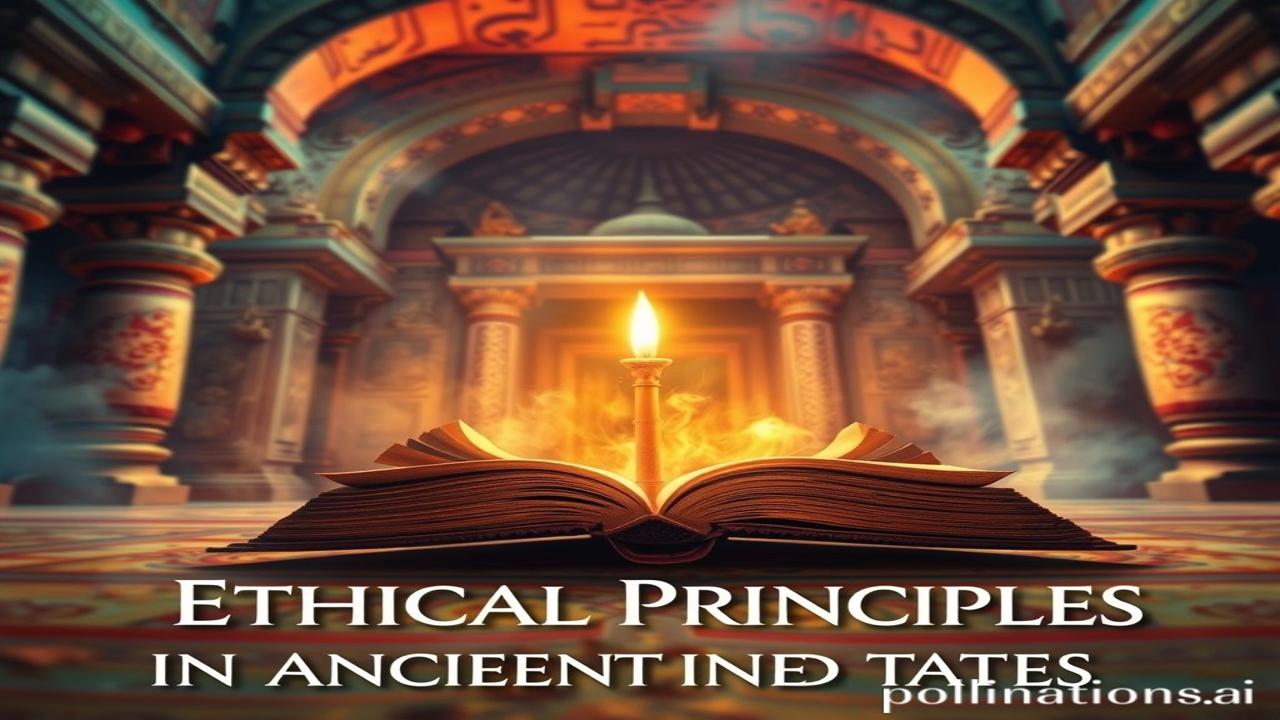Waqt Ki Nadi Mein Doobi Ek Awaaz: Ethical Principles in Ancient India
Kabhi kabhi lagta hai, jaise hawa mein koi purani awaaz gunjti hai. Ek awaaz jo vedon ki panktiyon mein chhupi hai, upanishadon ke darshan mein basi hai, aur ramayan-mahabharat ki kahaniyon mein jeevit hai. Yeh awaaz hai dharma ki, satya ki, ahimsa ki – yeh hai ancient India ke ethical principles ki. Kya aapne kabhi socha hai, ki humare purvajon ne kin values ko apna jeevan aadhar banaya tha? Chaliye, waqt ki is nadi mein dubki lagate hain aur khojte hain us anmol darshan ko.
Bharat Ki Dharti, Nitiyon Ka Janm: Historical Context
Ethical principles in ancient India koi achanak se aayi hui cheez nahi thi. Yeh ek slow process tha, centuries of philosophical discussions, spiritual practices, aur societal norms ka result tha. In principles ka basis Vedas, Upanishads, Dharma Sutras, aur baad mein Bhagavad Gita jaise texts mein milta hai.
What is it? Basically, yeh values ka ek system hai jo logo ko yeh batata hai ki right aur wrong kya hai, how to live a good and meaningful life.
When and where? Lagbhag 1500 BCE se lekar 500 CE tak, yeh principles develop hue aur spread hue across the Indian subcontinent.
Why is it important? Kyunki yeh principles humare culture, humari identity ka foundation hain. They shaped our society, our laws, our art, and our literature. Aaj bhi, we see reflections of these principles in our daily lives.
Zameeni Sach: The People, Their Lives, Their Dharma
Imagine a gurukul, a teacher reciting verses from the Vedas to his students. Ya phir ek kisan, subah uthkar dharti maa ko pranam karta hai, before starting his work. Ma Rukmini mandir mein deep jala rahi hai, chanting mantras for the well-being of her family. Yeh sirf tasveerein nahi hain, yeh ancient India ki reality hai.
Rulers like Ashoka embraced ahimsa (non-violence) after the bloody Kalinga war. Artisans created magnificent sculptures, following principles of satya (truth) and dharma in their work. Saints like Buddha preached karuna (compassion) and maitri (friendliness) to all beings.
“Putra, Dharma ka palan karna hi jeevan ka lakshya hona chahiye,” ek pita apne bete ko samjhata hai. “Satya aur ahimsa se kabhi door mat hatna.”
Dharohar Aur Pehchaan: Cultural Significance Today
Aaj bhi humare desh mein, ethical principles dikhte hain. Festivals jaise Diwali, Dussehra, Holi – sabhi ka ek ethical message hota hai. Our constitution is based on principles of equality, justice, and liberty, which are inspired by ancient Indian values.
Humare art, music, dance, architecture mein bhi yeh values reflected hote hain. Think of the intricate carvings in the temples of Khajuraho or the serene beauty of Ajanta caves – they all tell stories of dharma, truth, and compassion. Yeh sab Bharatiyata ka hissa hain, humari modern identity ka foundation hain.
Mazedaar Tathya Ya Bhram-Bhanjak: Fun Fact & Myth-Buster
Myth: Log samajhte hain ki ancient India sirf spirituality aur meditation ke baare mein tha.
Asli Sach: Ancient India mein ethics ka concept sirf religious nahi tha. It was deeply integrated with social, political, and economic life. Arthashastra jaise texts mein statecraft, law, aur governance ke ethical principles bhi milte hain.
Drishya Aur Bhavnayein: Visual & Sensory Layer
Sochiye, Ganga nadi ke kinaare shaam ka waqt hai. Mandir ki ghantiyan baj rahi hain, hawa mein agarbatti ki sugandh hai. Sant apne chelon ko satya aur ahimsa ka path padha rahe hain. The feel of the cool river breeze, the chanting of mantras – it’s an experience that touches your soul.
Temple walls feel cool to the touch, a silent witness to centuries of devotion and wisdom.
Antim Vichar Ya Uddharan: Closing Insight or Quote
“धर्मो रक्षति रक्षितः” – Dharmo rakshati rakshitah (Dharma protects those who protect it). This ancient Sanskrit quote reminds us that by upholding ethical principles, we protect ourselves, our society, and our future. Waqt ki nadi mein doobi hui yeh awaaz aaj bhi humein sahi raasta dikhati hai. Let’s listen to it, and let’s live a life guided by dharma.
